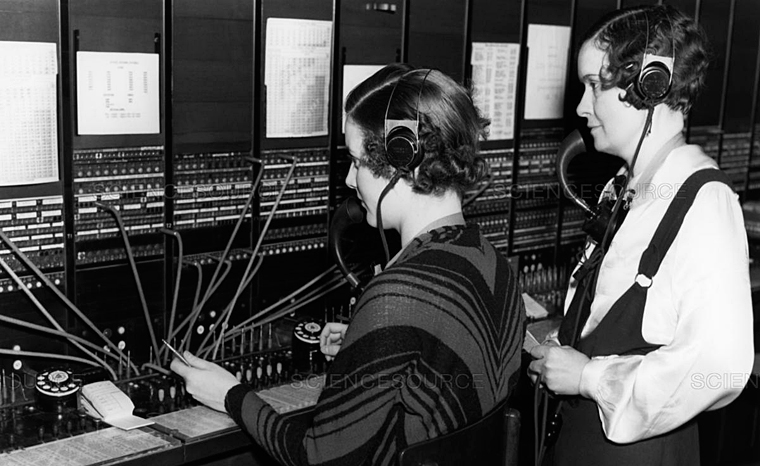
The communication revolution truly began with the introduction of universal telephone service in America. The telegraph had provided an international communication system, but it was slow, centralized in a few locations and depended upon messengers for the delivery of telegrams to customers.
Telephone service brought a new democracy to communications, making it possible for average Americans to simply pick up the phone and say “hello.” The excitement and energy associated with the telephone sent shockwaves through the culture. Each home eventually had a phone number and phone operators could connect people in seconds. News that used to travel slowly suddenly moved quickly and isolation was quickly replaced with connectedness. Each home and business in America enjoyed two numbers, one for the street, and one for the phone.
Before long, directories of telephone numbers appeared combined with the ability to call the operator for information about someone’s phone number. The anonymity of the individual began to fade, replaced by the ease and comfort of ready contact.
As its technology improved and the price of phone service began to drop, the phone became fully integrated into society, personal communication and commerce seamlessly bound together. The long-term AT&T monopoly was removed and phone service de-regulated. With the advent of “industrial-strength” telemarketing, the boundary between anonymous personal space and public access disappeared, but soon the open access and availability of phone communication was to be transformed yet again, this time by the answering machine.
Commercial answering services had long been a fixture of the business world, but the personal answering machine returned a measure of privacy to the average citizen. No longer was every call answered; playing and deleting messages became the modus operandi. Then the phone companies began to offer message center services, and progressively added additional features to their phone service, call waiting, and caller ID, for example. Privacy and insulation from phone intrusion gained wider and wider popularity in the face of the relentless and constant pursuit of telemarketers, recorded announcements, poll-takers and bill collectors.
The democratization of phone communication is now almost over. This week I received a notice from AT&T that my phone service now includes a call management system that requires callers to enter a 10-digit code for their call to be completed. Without the code, callers will hear a recorded message stating that they must have the code to complete their call. I have been provided with some pre-printed cards showing the 10-digit code to provide to family and friends. While my phone number remains listed and available through information, callers unknown to me will not get through unless I allow them. Approved callers are assigned a special “ring,” while unknown callers get the “raspberry.”
The qualities that made the telephone so useful, namely its convenience and ubiquity in modern life, have overwhelmed us. All too often, the phone rudely intrudes upon what moments of serenity we can find in our hectic, over-stimulated lives. Ironically, these new privacy features have moved us from the innocent excitement of “hello” to the self-protective isolation of “don’t call me, I’ll call you.”